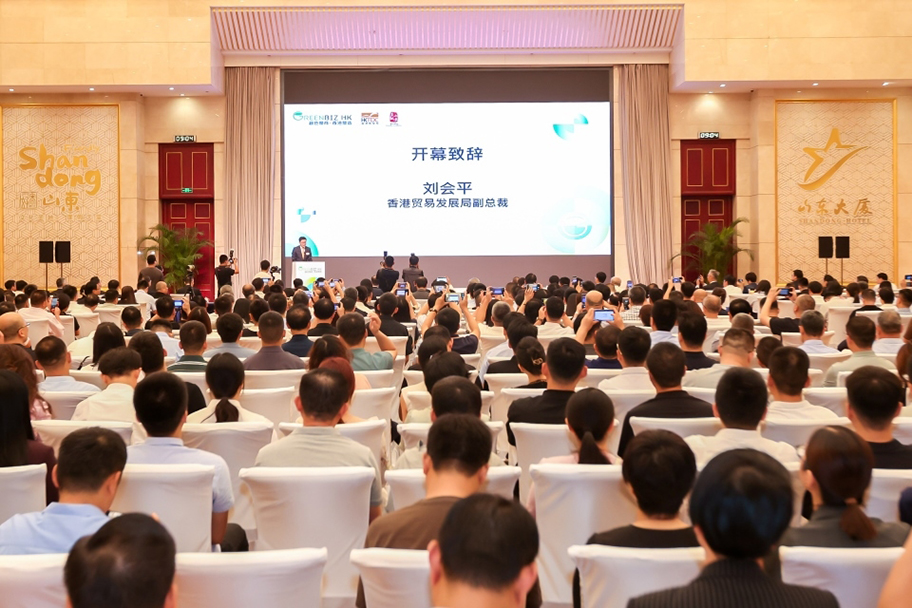Trade impacts of the Belt and Road Initiative
By Joanna Konings, Senior Economist, ING
The Belt and Road Initiative (BRI) is increasing transport connections between Asia and Europe with potential consequences for international trade. Trade between the countries involved accounts for more than a quarter of world trade, so better connections and the lower trade costs that come with them could have a significant global impact. A halving in trade costs between countries involved in the BRI could increase world trade by 12%. Countries in Eastern Europe and Central Asia stand to benefit most, but the benefits will depend on where trade costs fall. There are already some opportunities to transport goods via rail between China and Europe, which may appeal to the wide range of industries with time-sensitive inputs and products. It could take many years before other impacts of the BRI are seen. Many projects are under construction, and the BRI is open-ended. Trade facilitation barriers between countries also need to be addressed……
Opportunities and growth
Rail vs air and sea transport for EU-China trade
Rail transport is only used for a small share of trade between the EU and China, and the BRI is not expected to change this. Nonetheless, interest in rail transport between Europe and China is understandable because the speed of transport is a key dimension of EU-China trade. Time-sensitive goods account for more than three-quarters of the value of China’s exports to the EU, and more than 60% of the EU’s exports to China. Speed is important where goods like the components of cars, phones and computers, are part of supply chains spanning many countries. For finished products, like seasonal clothing, fast delivery can be important where demand is very changeable. As rail transport becomes more accessible, importers and exporters can use rail transport when previously they have only had the options of air and sea transport. Faster delivery frees up working capital and reduces capital costs, and rail transport also offers a much greener alternative to air transport for the most time-sensitive trade flows.
Impacts on international trade
Trade between Asia and Europe (not including trade between EU countries) accounts for 28% of world trade, so making those trade flows easier has a large potential impact. The size of this impact depends on the sensitivity of trade to changes in relative costs, which can be estimated in gravity models of international trade. These models describe trade flows in terms of the size of countries and the relative costs of trade between them. The relationships in the gravity model also allow us to calculate approximate individual country effects when trade costs change.
The impact of the BRI will also depend on where trade costs fall as a result of BRI projects. Trade costs may fall between a very small set of countries, or much more widely across Asia and Europe. We investigate this using three scenarios. In each case, we assume that the BRI will in the long run lead to a 50% fall in trade costs between a different set of countries:
- New Eurasian Land Bridge: countries along the New Eurasian Land Bridge economic corridor (China, Kazakhstan, Russia, Belarus and Poland), which is broadly the route of most current international rail services between China and Europe. Trade costs are also assumed to halve between countries along the New Eurasian Land Bridge economic corridor and the EU15, Cyprus and Malta (costs are not assumed to fall between the EU countries).
- BRI corridors: countries along all BRI economic corridors, covering the majority of Asia and the EU (again, costs are not assumed to fall between EU countries)
- BRI corridors and partners: as in the BRI corridors scenario plus countries in Europe and Asia which have signed BRI implementation and co-operation agreements with China, including Central and Eastern European countries, Indonesia, Singapore, Saudi Arabia and Egypt.
When trade costs fall between these countries, trade between them increases. The resulting impacts on world trade range from a 4% increase in the scenario involving the New Eurasian Land Bridge countries, to 12% when trade costs fall between all countries involved in the BRI.
As mentioned above, the relationships in the gravity model allow us to calculate approximate individual country effects when trade costs change. When trade costs are halved between all countries involved in the BRI, there are estimated increases in trade of 35% to 45% for Russia, Kazakhstan, Poland, Nepal and Myanmar. Overall, countries in Central Asia and Eastern Europe see the largest increases.
Some countries involved in the BRI do most of their trade with other BRI countries (China and the EU15 countries, on the other hand, do a relatively small amount of their total trade with other BRI countries). Those countries benefit from the fall in trade costs affecting the majority of their trade. Although all countries increase their exports to Greater China, the fall in costs also benefits the bloc of EU15 countries, as the other large trade partner of most countries in the region. This is especially the case for Eastern European countries, highlighting the importance of where trade costs fall in determining which countries will benefit from the BRI. If the BRI did not produce a fall in trade costs between countries in Eastern Europe and the bloc of EU15 countries, then the overall impact of the BRI on Eastern European countries would instead be relatively small.
Within countries, different industries may feel the effects of competition in other countries having been brought a step closer through lower trade costs. This will stimulate competition and potentially also innovation, with benefits for consumers, but some industries and sectors may lose out to competitors from other BRI countries. 50% is undeniably a large fall in trade costs, but it is chosen due to the influence that the BRI will have on transport costs and trade facilitation, which are also factors that research suggests are big influences on trade costs. The WTO has calculated that improvements in trade facilitation could reduce BRI countries’ trade costs by between 12% and 23%. Transport costs are consistently found to be an important part of trade costs, though estimates vary widely (partly because of the many different measures of transport costs in empirical studies). 8 The combined effect of trade facilitation improvements estimated by the WTO (12-23%) and a halving in transport costs (33%, on the assumption that transport costs are two-thirds of trade costs) would be one way of reaching a 50% reduction in overall trade costs.
The mix of transport and trade facilitation cost reductions is likely to differ for every trade flow. For some, a significant fall in costs might come through switching from air transport to rail or rail and sea. Others might benefit from a new shorter route opening up to a destination market, or more efficient border crossings or port operations along a particular route. In practice the composition of the fall in costs is likely to make a difference: Ramasamy et al (2017) show that trade facilitation is critical to realising the trade gains from improvements in infrastructure in BRI countries. And transport infrastructure needs to increase to some extent to handle the higher trade flows (though the current practice of slow steaming in the shipping industry also provides for some spare capacity within the current infrastructure).
How far costs may fall is really a question about how long the BRI policy will exist. The BRI projects currently under construction are expected to be completed in the coming five years, and the BRI is open-ended (and ultimately aiming for “unimpeded trade”), so new projects are likely to be initiated in that time. As a result, any significant fall in trade costs due to the BRI is likely to take at least five years, and more likely ten, or even longer. If trade costs are slow to fall, effects on world trade growth will be small in any given year. Significant falls in trade costs, even over a long period, could lead to large impacts on international trade.
Please click to read full report.




